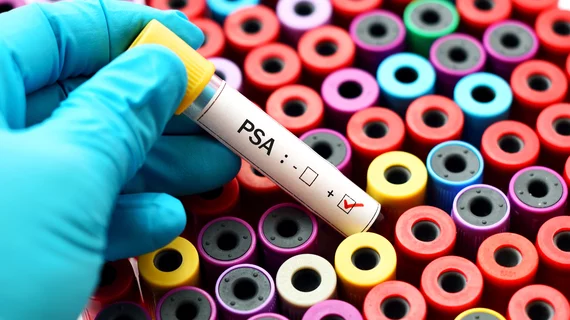SPECT/CT helps personalize treatment options for prostate cancer patients
New research presented this week at the Society of Nuclear Medicine and Molecular Imaging 2023 Annual Meeting indicates that 177Lu-SPECT/CT can be used to guide treatment decisions in patients with metastatic castration-resistant prostate cancer.
Using SPECT/CT imaging, providers can stratify patients based on their treatment responses and make personalized adjustments accordingly. Currently, men undergoing 177Lu-PSMA treatment do so at standardized intervals (the treatment received FDA approval in 2022). Although this method is effective in many men, patients respond differently to the treatment, and those who show early-response biomarkers on imaging could potentially extend the time in between their treatments, experts explained at the SNMMI meeting.
To better understand the role of SPECT/CT in making these decisions, a team of researchers analyzed the treatment responses of 125 men who were treated in a clinical program with six weekly doses of 177Lu-PSMA. After each dose, the men underwent SPECT/CT imaging, and after their second dose, their 177Lu-SPECT response and PSA levels were analyzed.
The men were divided into groups based on their PSA levels and disease progression on imaging. Those who showed significant PSA level decreases and partial responses on imaging were allowed to go on a “treatment holiday” until their PSA levels increased; those who showed stable or moderately reduced levels and responses continued their treatment course, and men who showed higher PSA levels and disease progression were given alternative treatment options.
On follow-up, the group noted that men who went on a “treatment holiday” (median of 6.1 months) still achieved the same or similar progression-free and overall survival as those who continued or changed treatment.
Commenting on the findings, Andrew Nguyen, MBBS, FRACP, AANMS, senior staff specialist in the Department of Theranostics and Nuclear Medicine at St. Vincent's Hospital in Sydney, Australia, and colleagues suggested that SPECT/CT could improve outcomes in these scenarios by better informing providers on how patients are responding to the recently approved treatment regimen.
“Personalized dosing allowed one-third of the men in this study to have treatment breaks while still achieving the same progression-free and overall survival outcomes they would have if they received continuous treatment,” Nguyen said. “It also allowed another one-third of men who had early biomarkers of disease progression the opportunity to try a more effective potential therapy if one was available.”
If validated in a prospective trial, the SPECT/CT stratification strategy could become more widely available.
Learn more here.

